Taste of a Place: Northern Ireland - No. 233
The countryside, the food, The Troubles, and baker Ciara Ohartghaile
IN EARLY JUNE I AM RIDING IN A VAN with other hikers heading to a ferry to Rathlin Island off the coast of Northern Ireland. We make a left turn in the town of Ballycastle, and as I look ahead, I see a shop with loaves of sourdough bread stacked high in the window. Above the window: URSA MINOR.
What I would have given to have been able to jump out of the van and walk into that bake shop. If you’ve ever been part of a group tour, then maybe you’ve felt the urge to explore on your own, too? I thought about it all day.
That evening in a local restaurant called Shanty, I see on the menu a local camembert-style of cheese from Cooleeney Farm in County Tipperary, served with caramelized onion and fig chutney and grilled Ursa Minor bread.
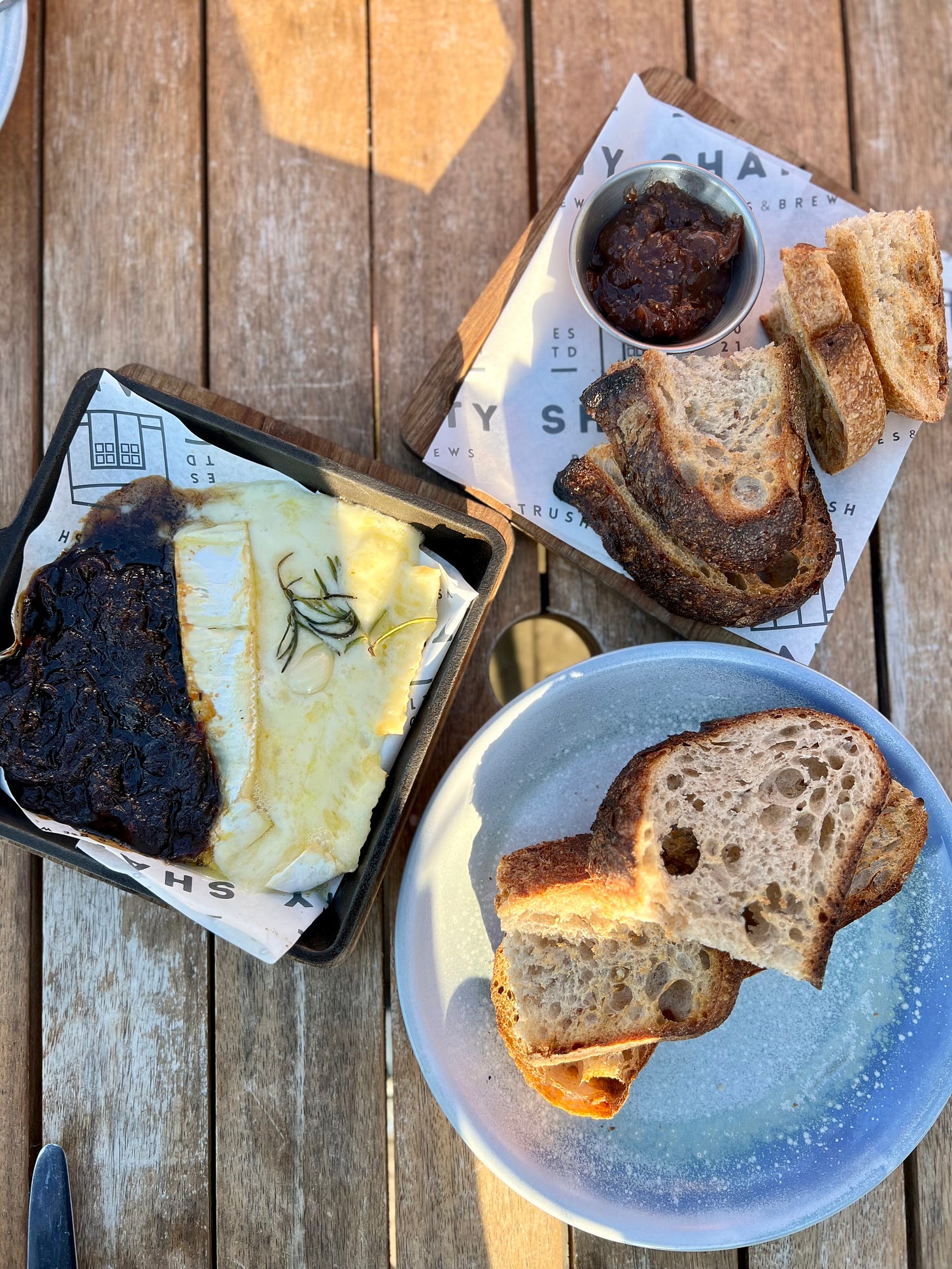
It was definitely a sign.
As it turns out, Ursa Minor’s bread is very well known in these parts and has received Slow Food UK’s best bakery award for the past three years.
So with the tour guide’s permission, I broke ranks.
The next day, my husband and I booked a cab and headed back to Ballycastle, a town of 5,000 situated along the spectacular Causeway Coastal Route running north along the coast from Belfast to Derry.
Part One: In kitchen with Ciara
Ciara and Dara Ohartghaile are the wife and husband team who created Ursa Minor. And as it turned out, Ciara is a fellow writer here on Substack and had given me this tiny window to come by and say hello because she was catering a party for 150 that evening. I thought to myself, who gives time to someone she has never met when she is feeding that many people? She’s either insane or terribly kind.
It was the latter.
Ciara was downstairs in the kitchen roasting purple onion, fennel, and garlic for a chickpea stew. She didn’t mind my being there while she multitasked. She has three young children, ages 3, 6, and 9, so I guess she’s good at it!
And her stress level was pretty low, which she said came from experience with entertaining. She grew up cooking in the kitchen with both her mother and grandmother. As a child, she was put in charge of passing appetizers and drinks at their parties.
‘’I absolutely love a party. My parents always have been magnificent hosts and we’ve had the most fun and amazing get togethers in our home over the years, with friends and family, music and plenty of food and drink. ‘’
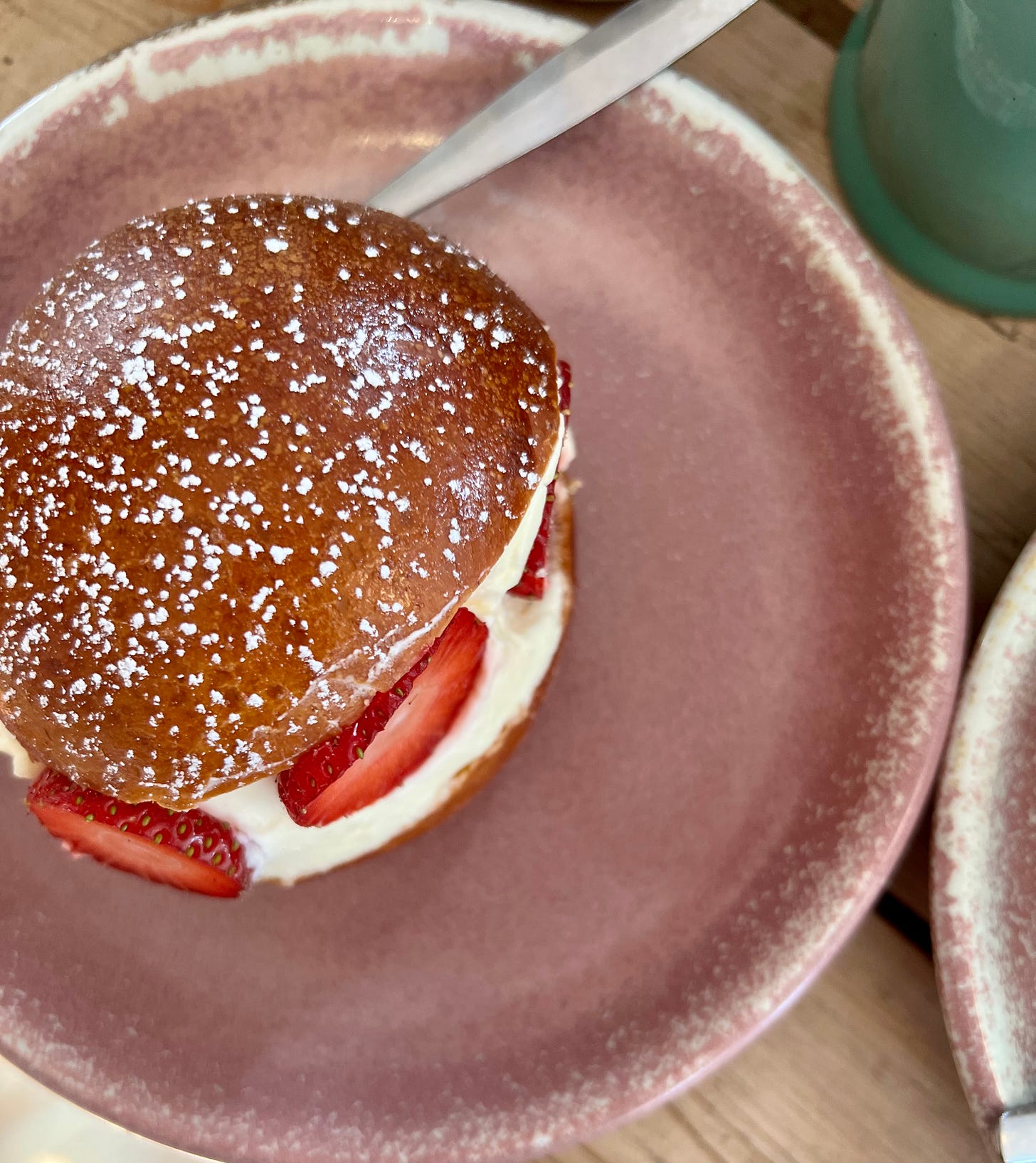
Ciara was born in Belfast, raised in a small town near the Giant’s Causeway, studied at the University of Edinburgh, and met her future husband Dara when they were both working at Carrick-a-Rede Bridge. A National Trust heritage site, this storied 60-foot-long rope bridge is suspended 100 feet above the sea and was first used by salmon fishermen to check on their nets in 1755. (Don’t worry! It’s been replaced and improved since then. I walked across it!)
Ciara and Dara sold what they had and set off to see the world. For two years, they visited the Mediterranean, South America, and New Zealand, and along the way they worked in cafes and bars to live a local life. In New Zealand, they were introduced to sourdough bread, something they wanted to take home to the north of Ireland. ‘’We craved that bread.’’
And when on their return there was no sourdough to be found, Dara taught himself to bake it. It wasn’t the bread of their youth which was soda bread, the quick bread leavened with bicarbonate of soda that we associate most with Ireland.
But Ursa Minor sought to disrupt Irish bread. Dara’s fragrant and crusty sourdough was sold at pop-ups and at fairs, and in a few years the couple crowdsourced for money to open their bakery in 2014. They named it Ursa Minor, which in the world of constellations is the Little Dipper or the Little Bear. When Ciara was pregnant with their first child, the couple’s nickname for her baby bump was ‘’little bear.’’
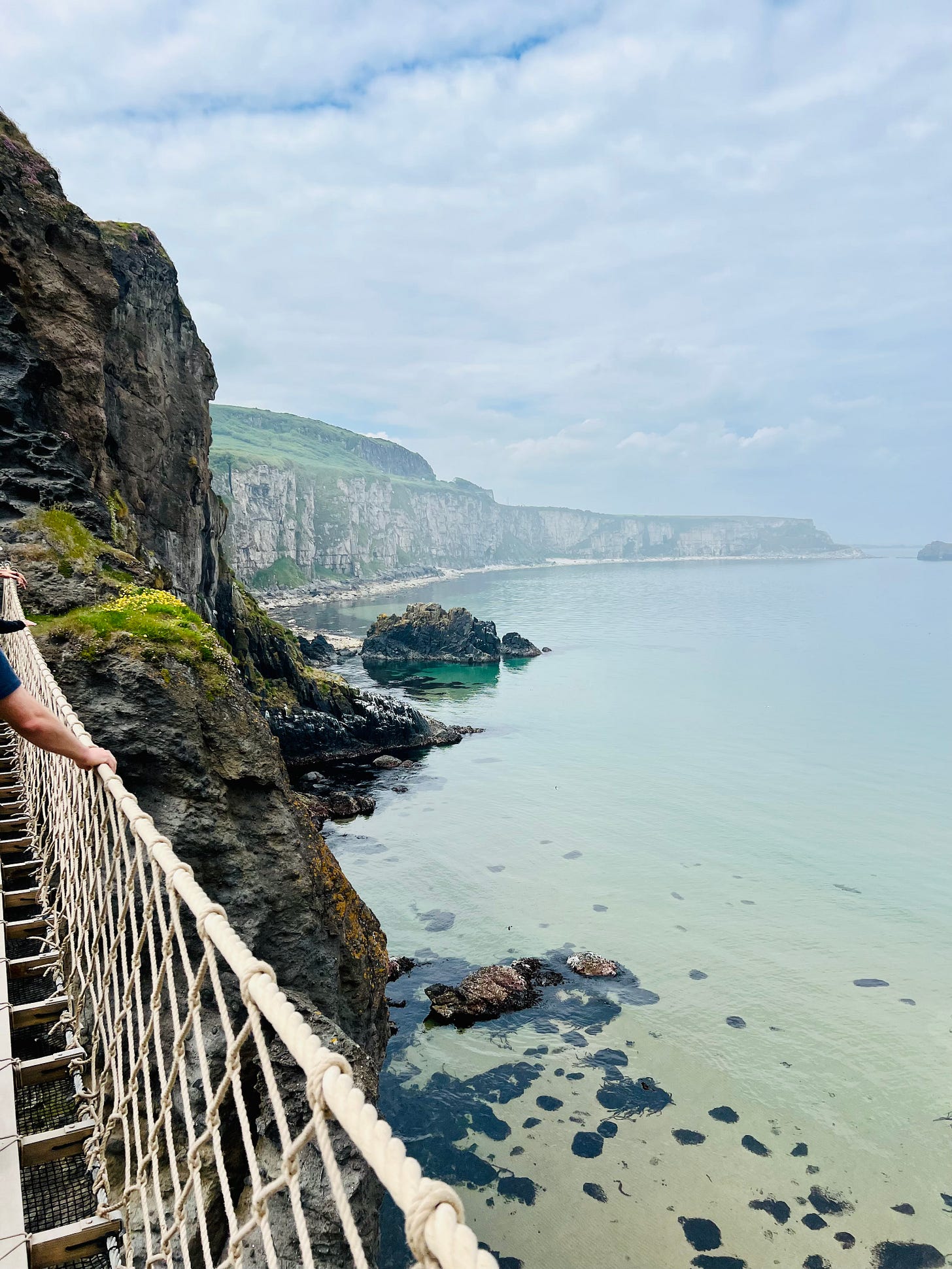

Part Two: The Troubles
I have a few stand out memories of being a very scared little girl (the root of some of my anxieties now no doubt); travelling through Derry on our way to visit my Aunt and Uncle in Donegal and encountering a burning bus blocking the road and when watching cartoons with my best friend, interrupted by a breaking news bulletin which was to report the worst single atrocity of the time, the Omagh Bomb. - Ciara Ohartghaile
Ciara’s parents moved north to the rural coast when she was a young girl because they wanted to leave the tension of an unsafe Belfast. They were not alone. Northern Ireland—this beautifully rustic region of six counties, a bucolic Bush River that gives its name to Bushmills whiskey, dramatic cliffs of volcanic basalt rock and sweeping coastlines along the Irish Sea and Atlantic Ocean, and barely inhabited islands like Rathlin where birds, plants, and ways of life have been protected—holds a troubled past.
Hikers like myself go there for the walks and scenic vistas—and a Guinness or two— and to hear about The Troubles. I was surprised how much the Northern Irish wanted to talk about it.
For 30 years, from 1968 to 1998, a violent conflict took place in Northern Ireland between the nationalists (Republicans) who were Catholic and wanted the northern part of Ireland to become a part of the republic and the unionists, the Protestant loyalists who wanted it to remain a part of the United Kingdom. Protestant immigrants from Scotland and England had been in Northern Ireland for centuries, and many Catholic Irish from the south had moved to Belfast in the late 19th century seeking work in the linen and shipbuilding industries. The Troubles were less about religion and more about culture and economics.
During the The Troubles—with the bloody street fighting, IRA bombs, and sniper attacks—some 3600 people were killed, according to Britannica, and 30,000 more wounded. A peaceful end called the Good Friday Agreement was mediated by former U.S. Senator John Mitchell in 1998.
Today in Northern Ireland only the farmers and the police are authorized to own guns. Criminals, of course, can get their hands on them, as they can everywhere.
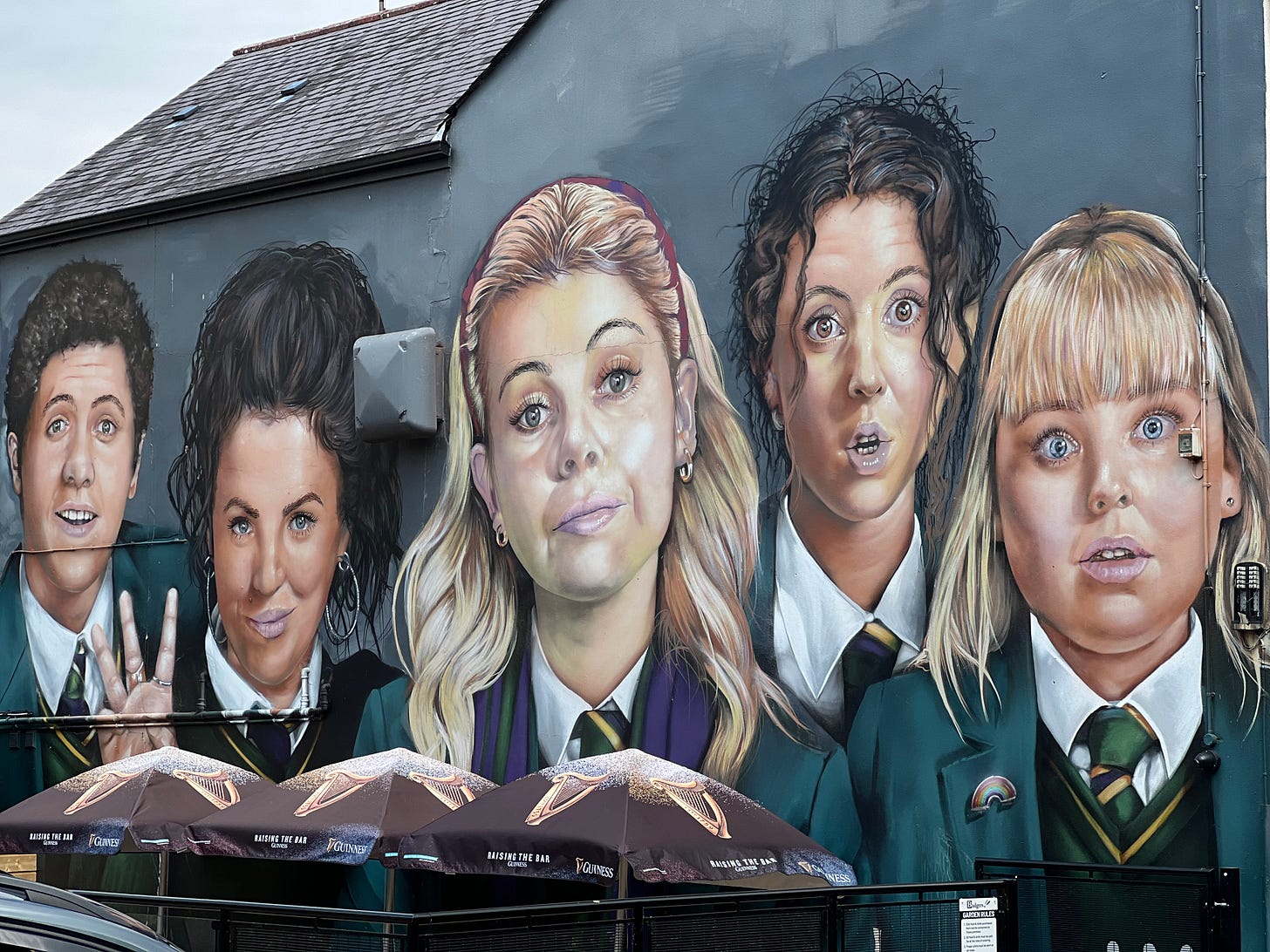
Today in Ireland no border separates north and south although the south is a part of the European Union and the north the United Kingdom. The Troubles are over, but partisan sentiments remain strong in some communities. With a new generation, you get a sense it’s all in the rear view mirror.
On one evening, we noticed a 20-foot chain link fence surrounding a police station. Our cab driver explained that the rare bad actor will still try to hurl a gas bomb over the fence, but ‘’we love our peace.’’
He added he is heartbroken seeing on the news how divided America is today and how the world needs a strong and united America.
‘’The North and South of Ireland know difficult times,’’ Ciara says. ‘’We have an understanding of anyone who has gone through hardship and turbulence.’’
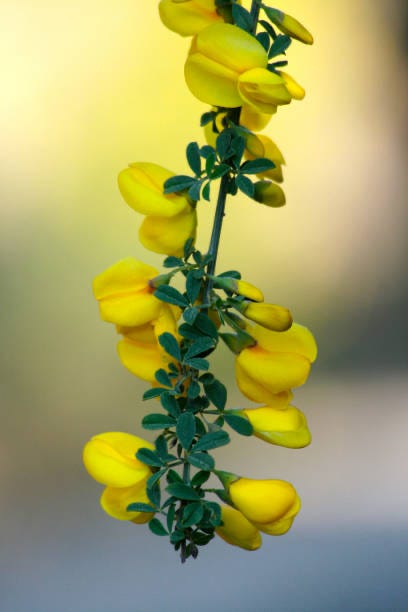
Part Three: Gorse and baking with summer flowers and fruit
Depending on the season, if you hike in Northern Ireland you will pass wild raspberries and elderberries, rock roses, gorse, wild garlic, local mushrooms, and honeysuckle. It’s natural that these foods find their way into Ciara’s cooking and baking.
In her newsletter Gorse, Ciara writes in June that her ‘’raspberries in the garden did a bit better this year and I got a handful of gooseberries, but all the currants were stolen by the naughty chickens. Next week we’ll get our first delivery of this year’s harvest of beautiful blueberries from County Clare. We’ve Spanish apricots and peaches, English cherries, Armagh strawberries and Aghadowey blackcurrants. We are spoilt.’’
Gorse, the tough local flowering plant that grows along the Irish hedgerows, is one of her favorite wild flowers. ‘’It has these beautiful yellow flowers and in the countryside when it’s in color, there’s a saying, when gorse isn’t in bloom, kissing is out of fashion,’’ Ciara says. ‘’But basically, gorse blooms all the year round!’’
On a deeper level, gorse represents hope, she says, which is why she named her newsletter after it. ‘’Light will always be found in the dark, so in those dark winter times you will see that flash of yellow in the hedgerows.’’
I might have been seeking conversation about bread and pastries, but in the end, when I was heading back to my tour and Ciara was off to cater her party, a door had opened. The more you travel, the more you realize the world is smaller than you think.
And the question becomes how do we hang on to our regional identities and at the same time embrace others, finding similarities and differences?
If you want to keep up with Ciara—and I highly recommend it: Here’s how to follow her writing and recipes on Gorse.
If you want to read more about The Troubles, I suggest the 2018 book, Say Nothing, by investigative journalist Patrick Radden Keefe, and the movies, Belfast and Michael Collins.
Have a great week! And thank you, Ciara!
- xo, Anne
And here’s how to save on an annual subscription to Between the Layers! It’s an August sale - a paid subscription for just $40.
This week, for Thursday’s paid subscribers, I bake a fabulous fruit tart of peaches, blueberries and cherries with Ciara’s recipe for creme patisserie inside. It is so beautiful in a rectangular tart pan! If you’ve thought about going paid and supporting my work, plus grabbing this wonderful recipe, this is a great time!
A PEACHY RECIPE:
Peach Breakfast for One
Ciara laments she was born in the wrong country for peaches: ‘’If I had to pick a favourite fruit it’d be a perfectly ripe peach. Something about that fuzzy fragrant skin, so tactile and pleasing in an eye closed, deep breath joyful way. The soft, super juicy orange flesh with slurpy sweet liquid running down the chin.’’
Slice of sourdough bread
Olive oil
Half a peach
Thin slices of Killeen’s Goat Cheese (a semi-hard goat cheese from County Galway, Ireland) or similar
Fresh basil leaves
Salt and pepper
Toast your bread and drizzle over some olive oil.
Cut your peach into wedges and arrange along with the cheese, tuck in the basil leaves, drizzle with more oil and a little bit of salt and pepper.
Eat immediately for a great breakfast.



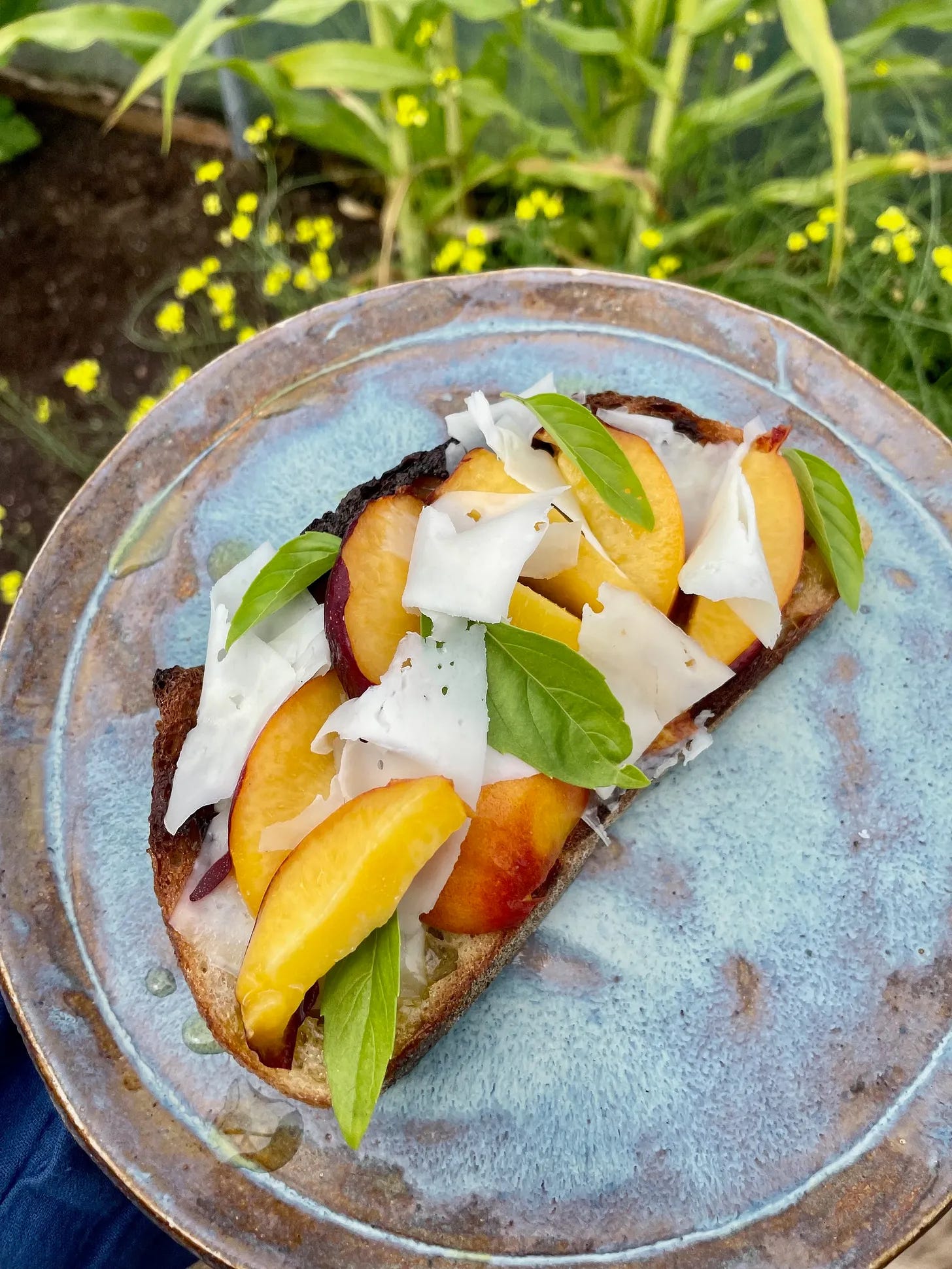
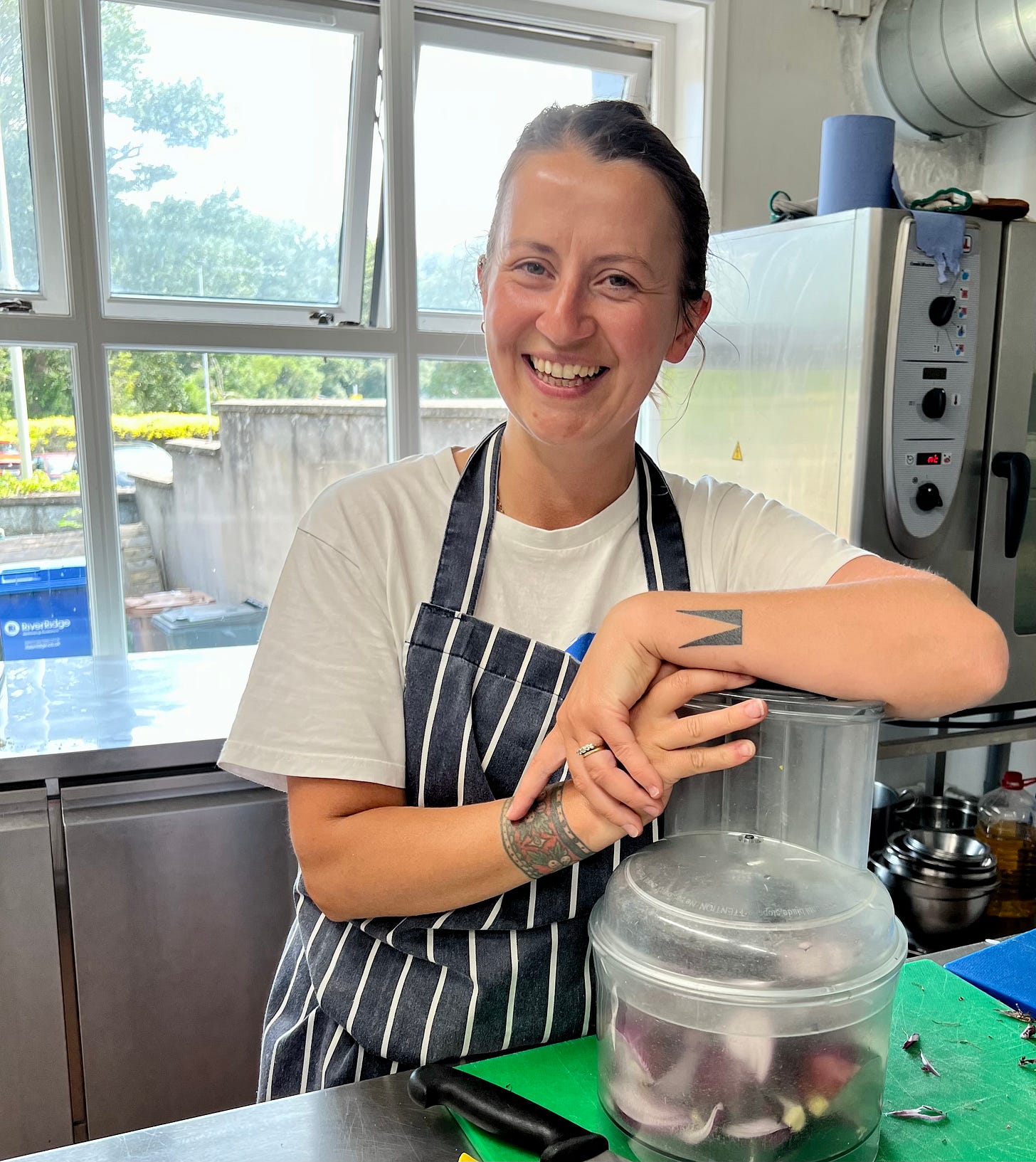
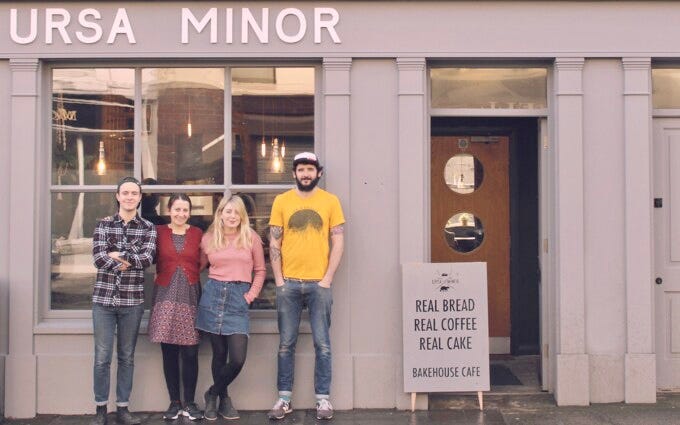

What a gem Ciara is! Fascinating and delicious post, Anne. I love that you broke ranks to visit Ursa Minor!
Another wonderful post, Anne! Now I have another place I really want to visit and some sourdough bread I want to eat with a peach and some Irish goat cheese. Oh that food and travel--and maybe a flash of yellow gorse--would open people’s minds and hearts!